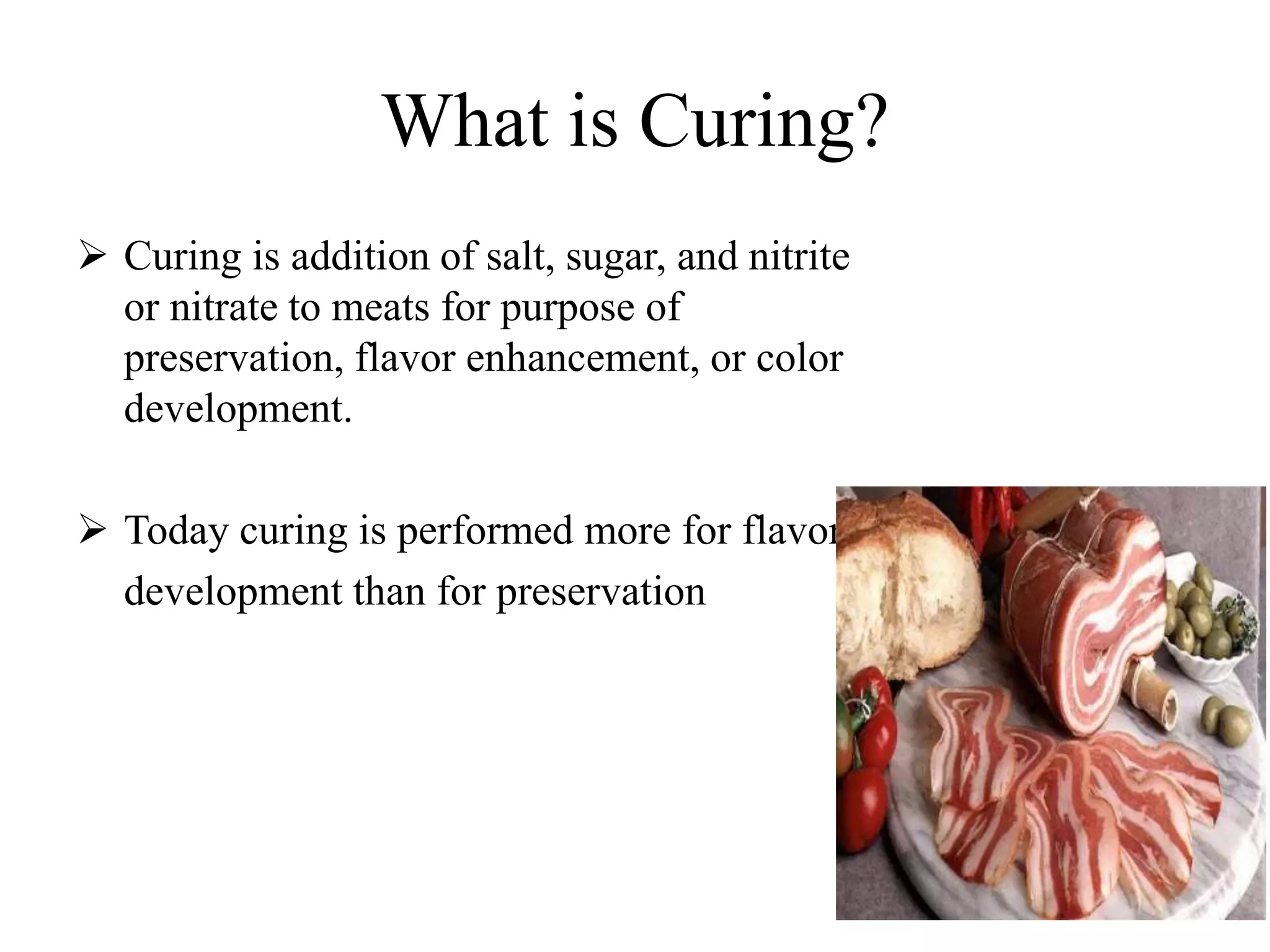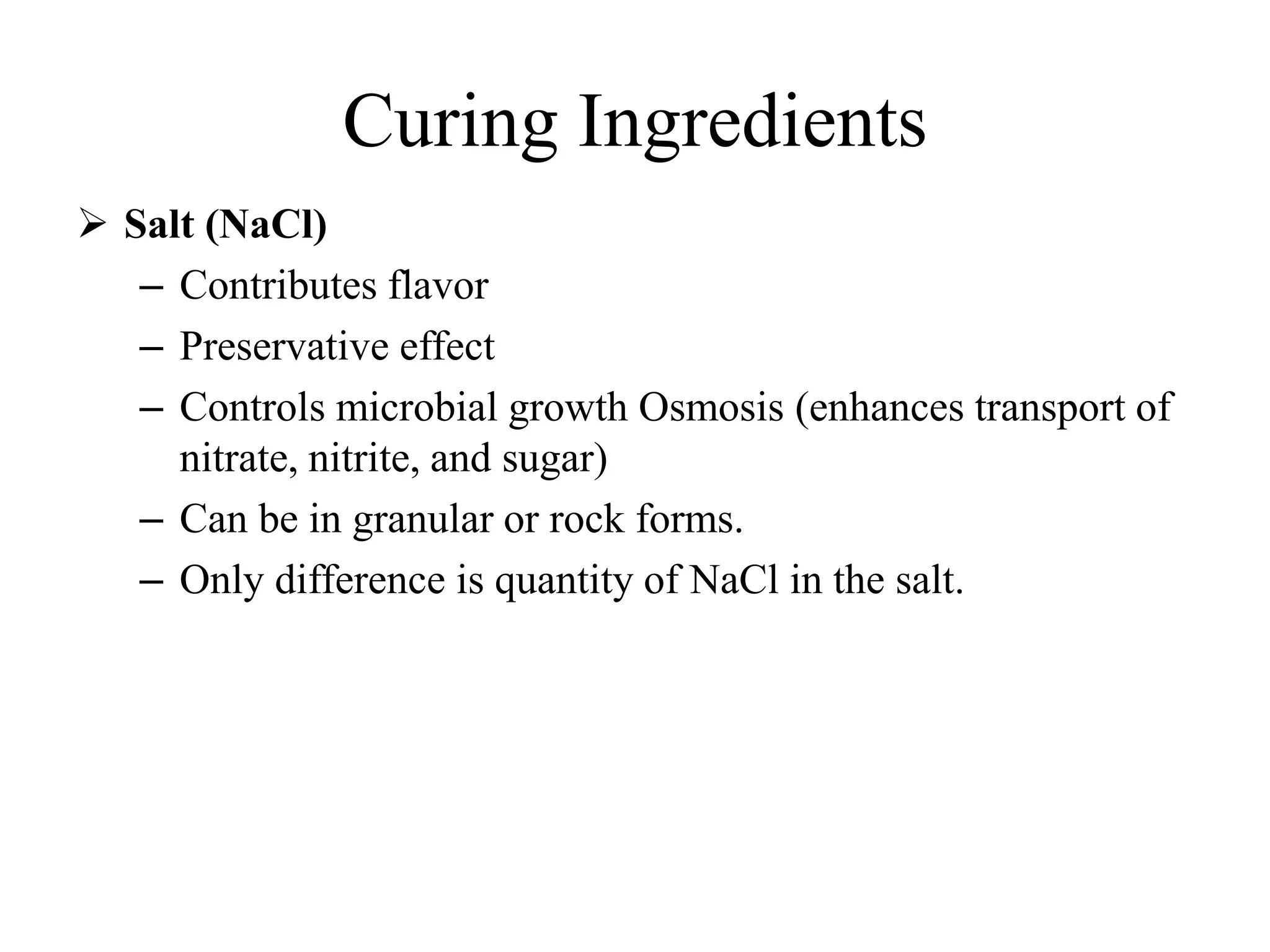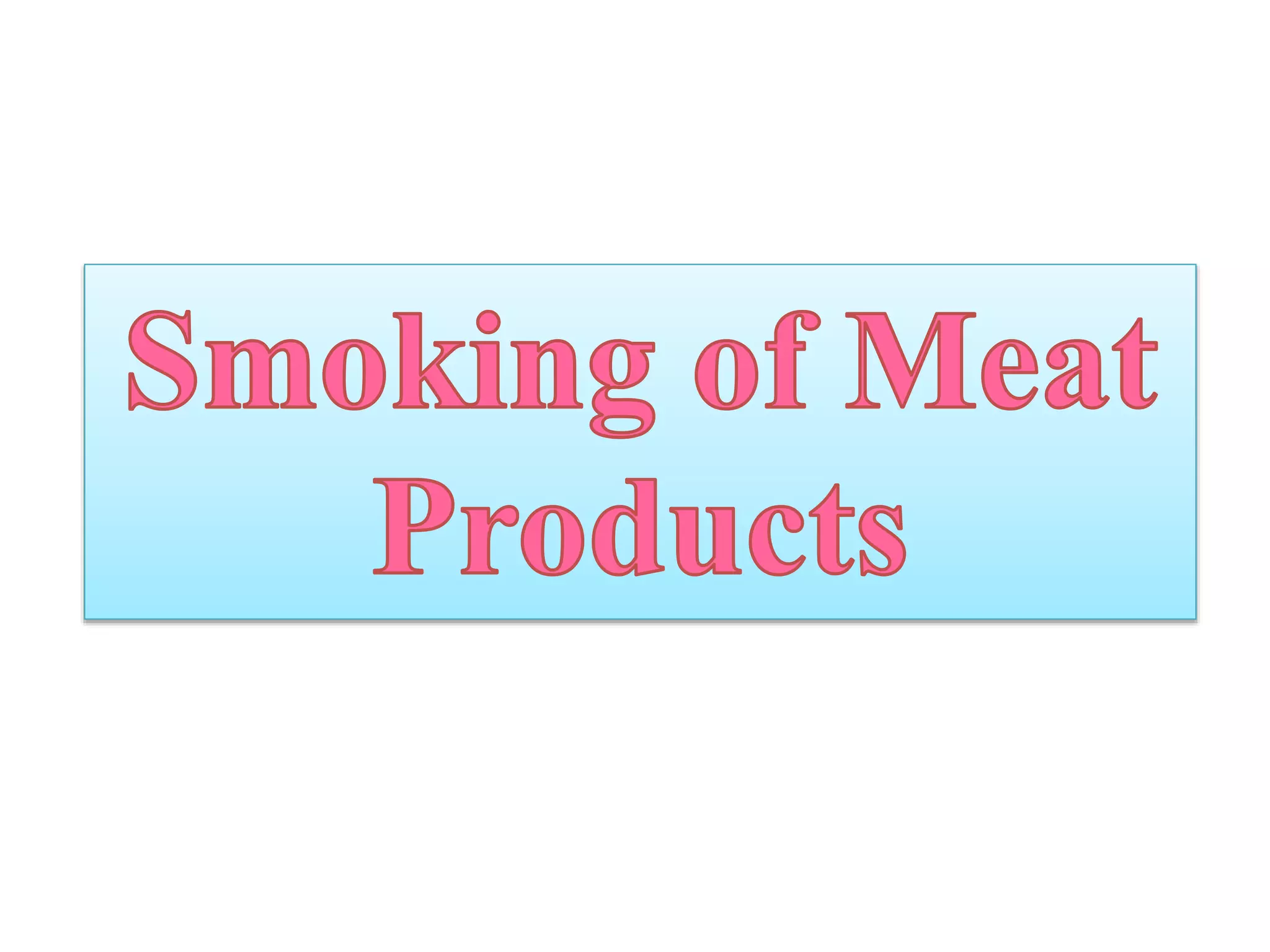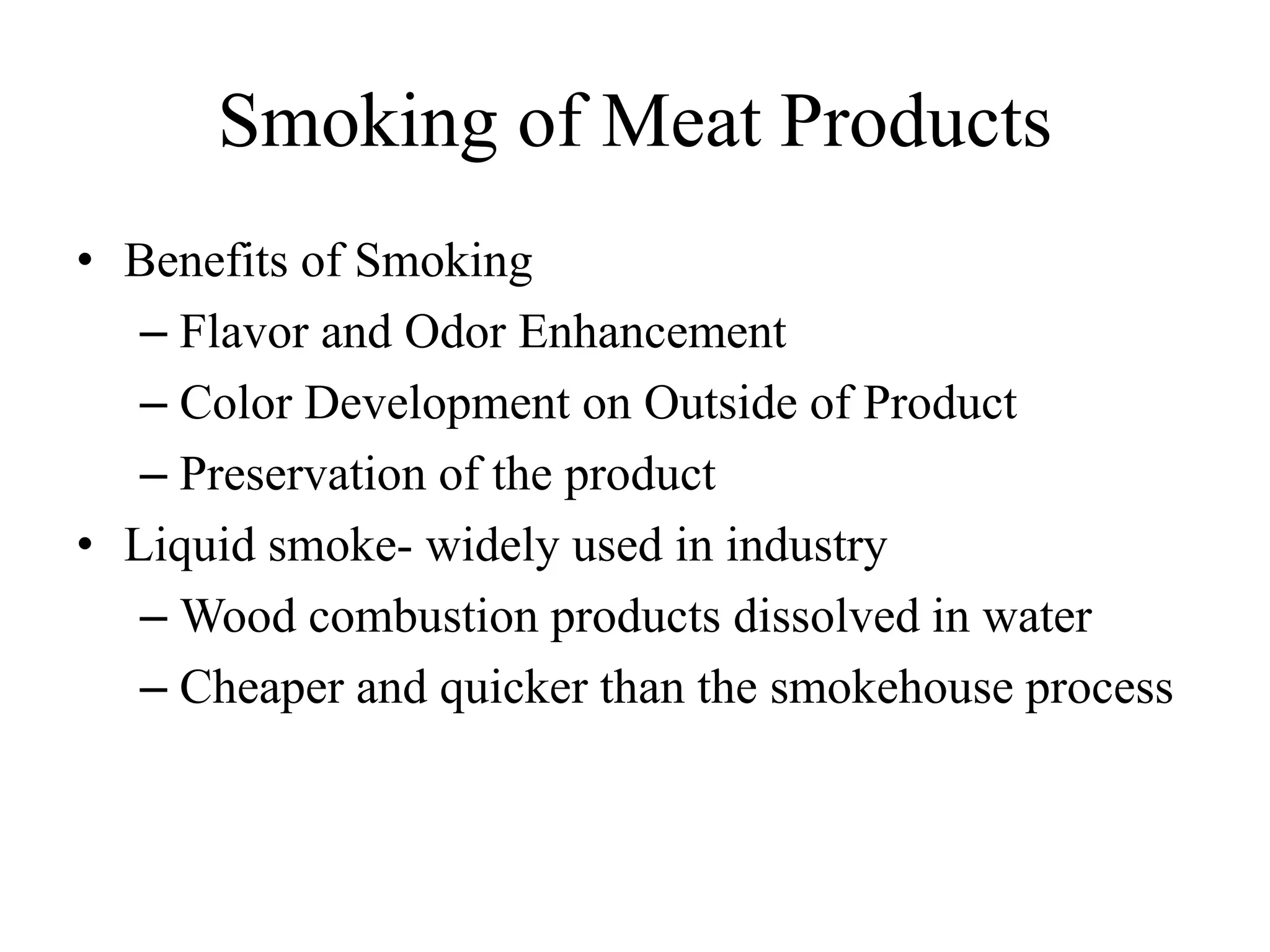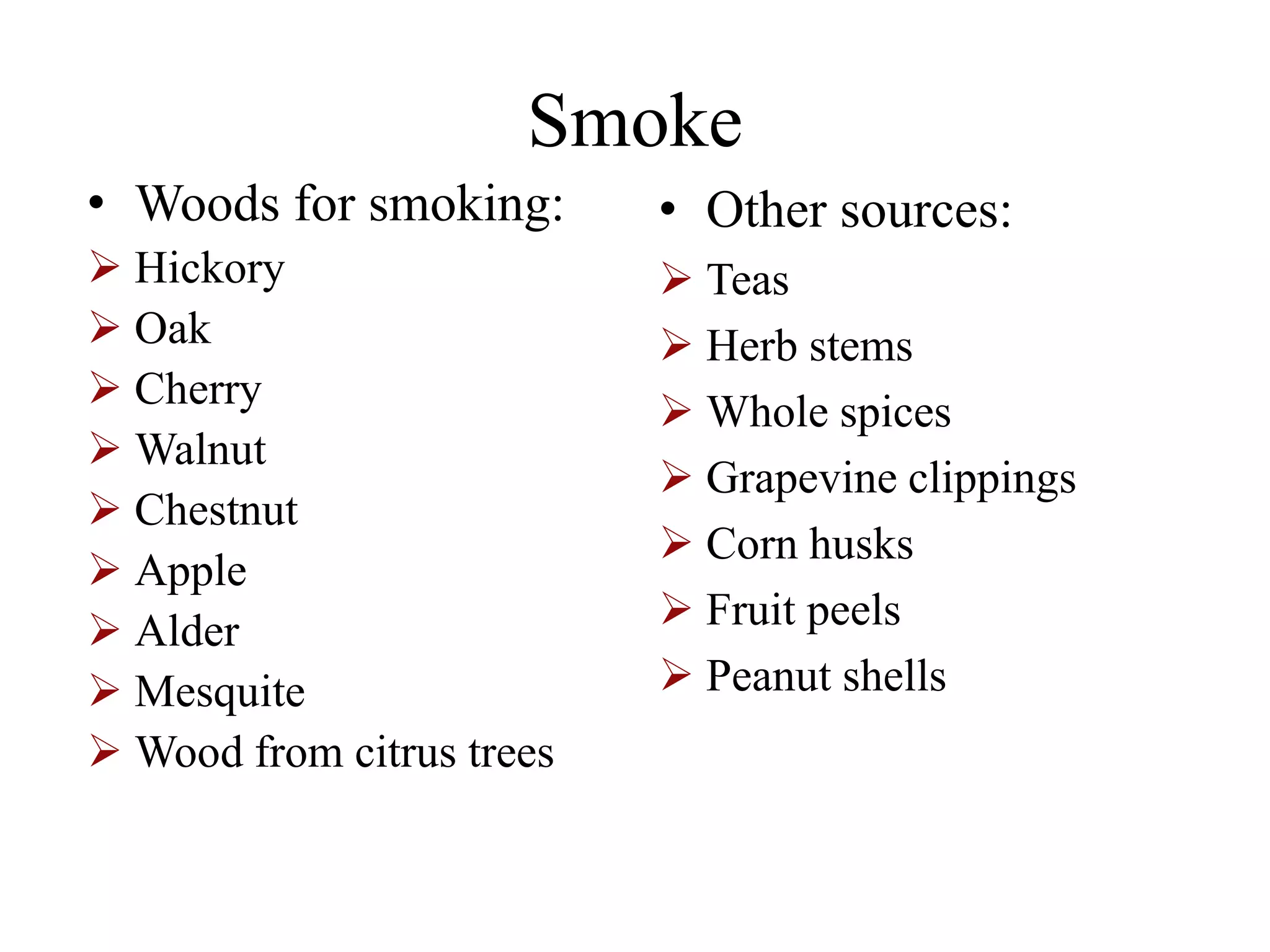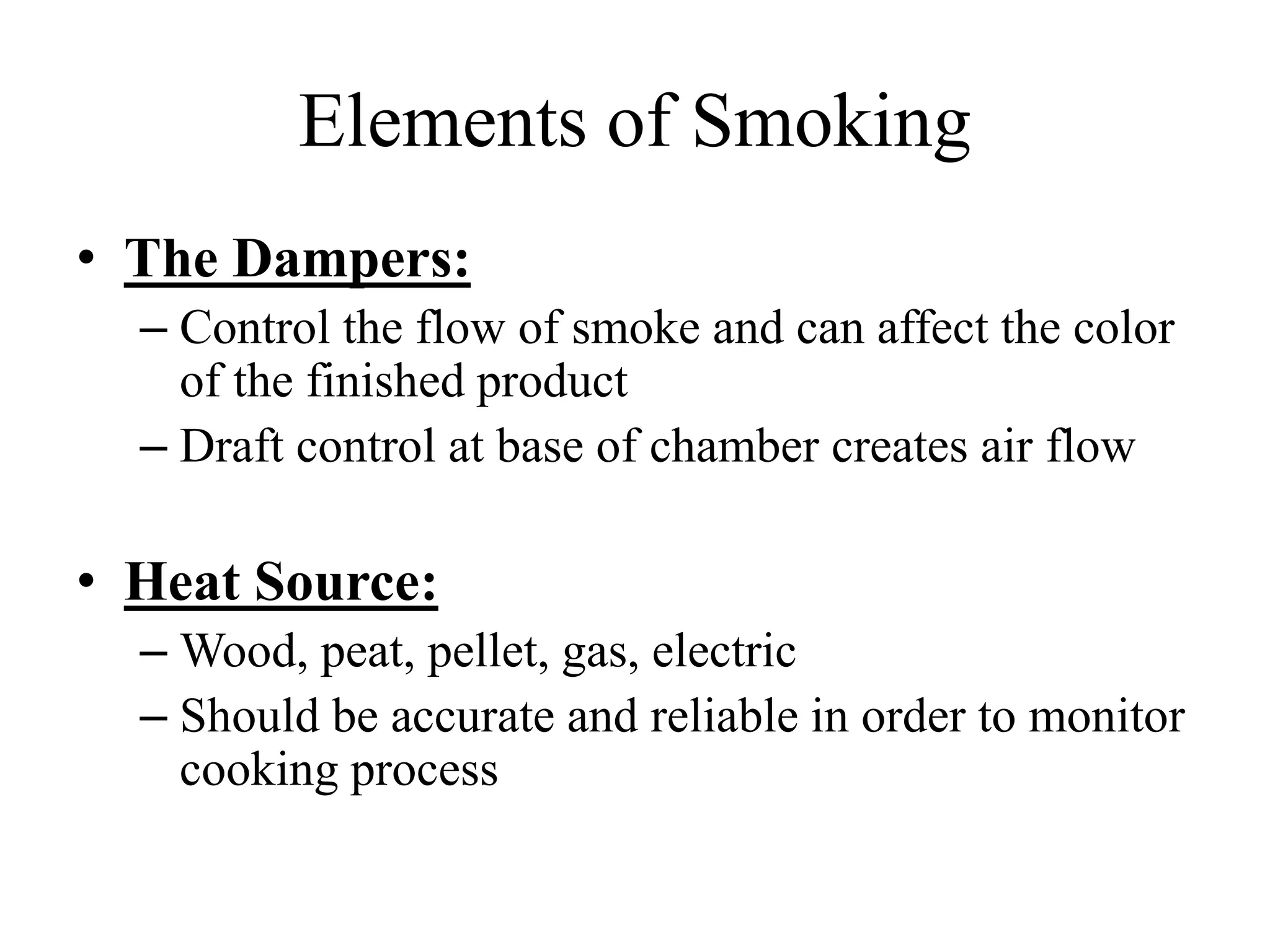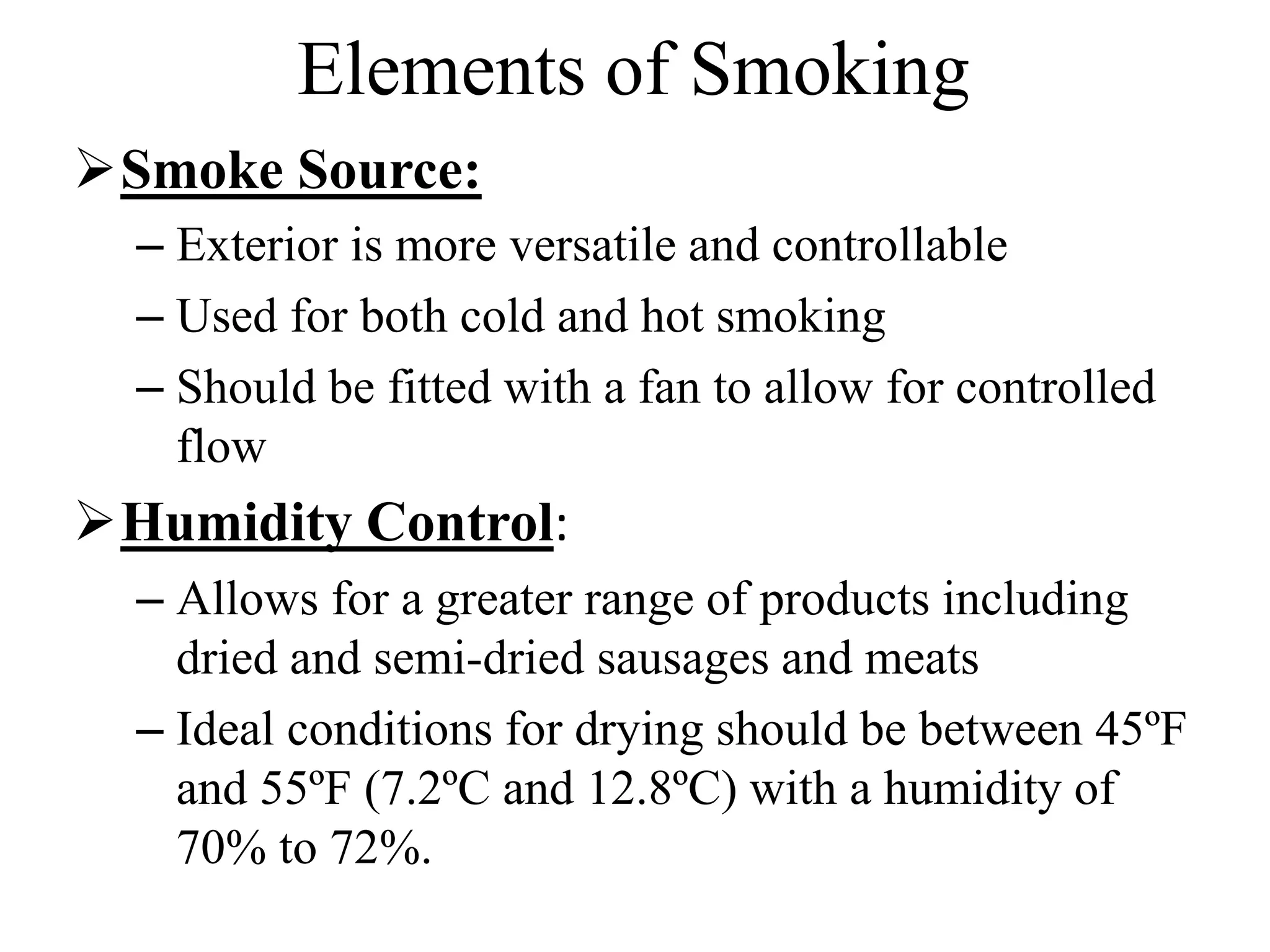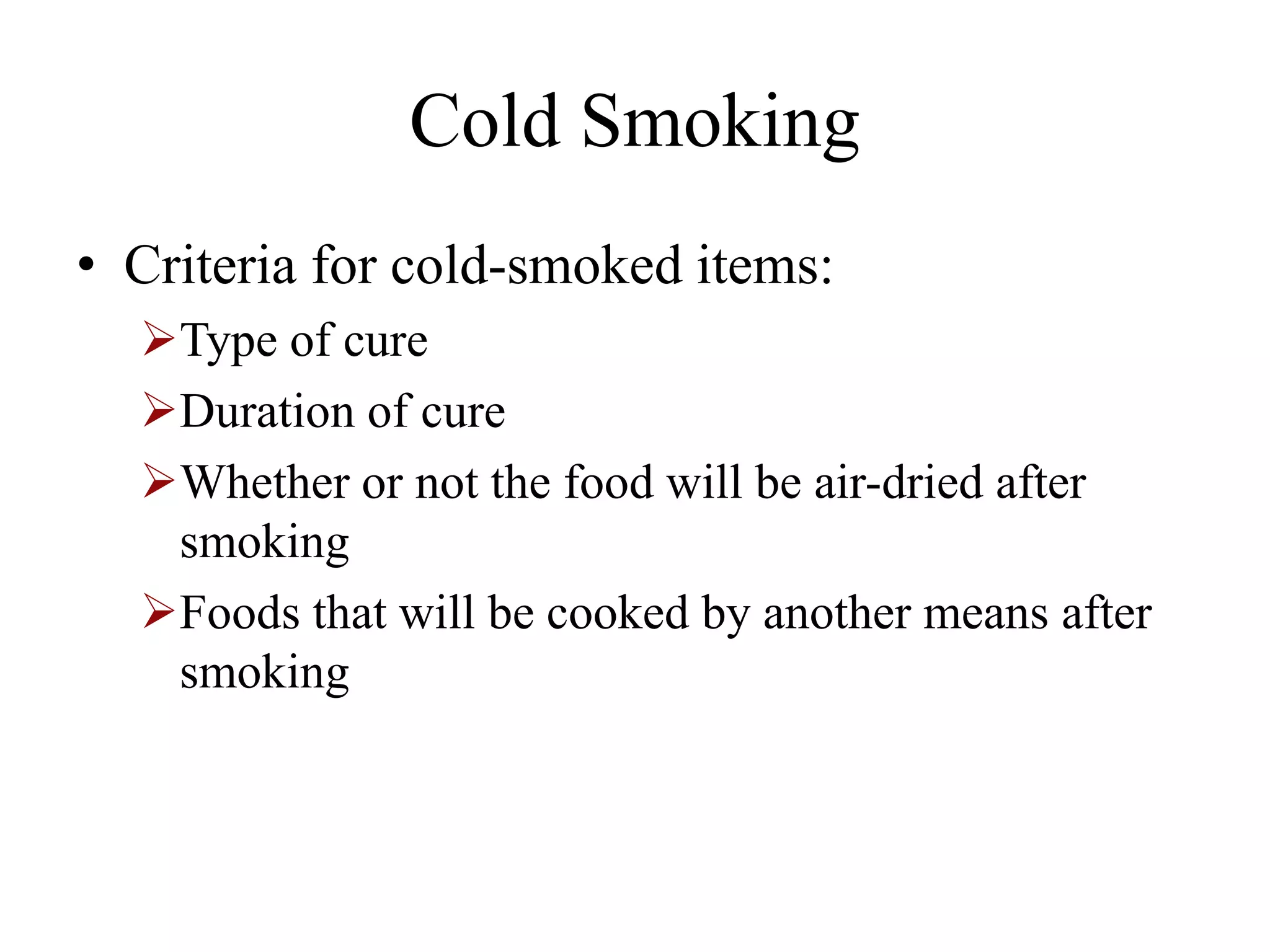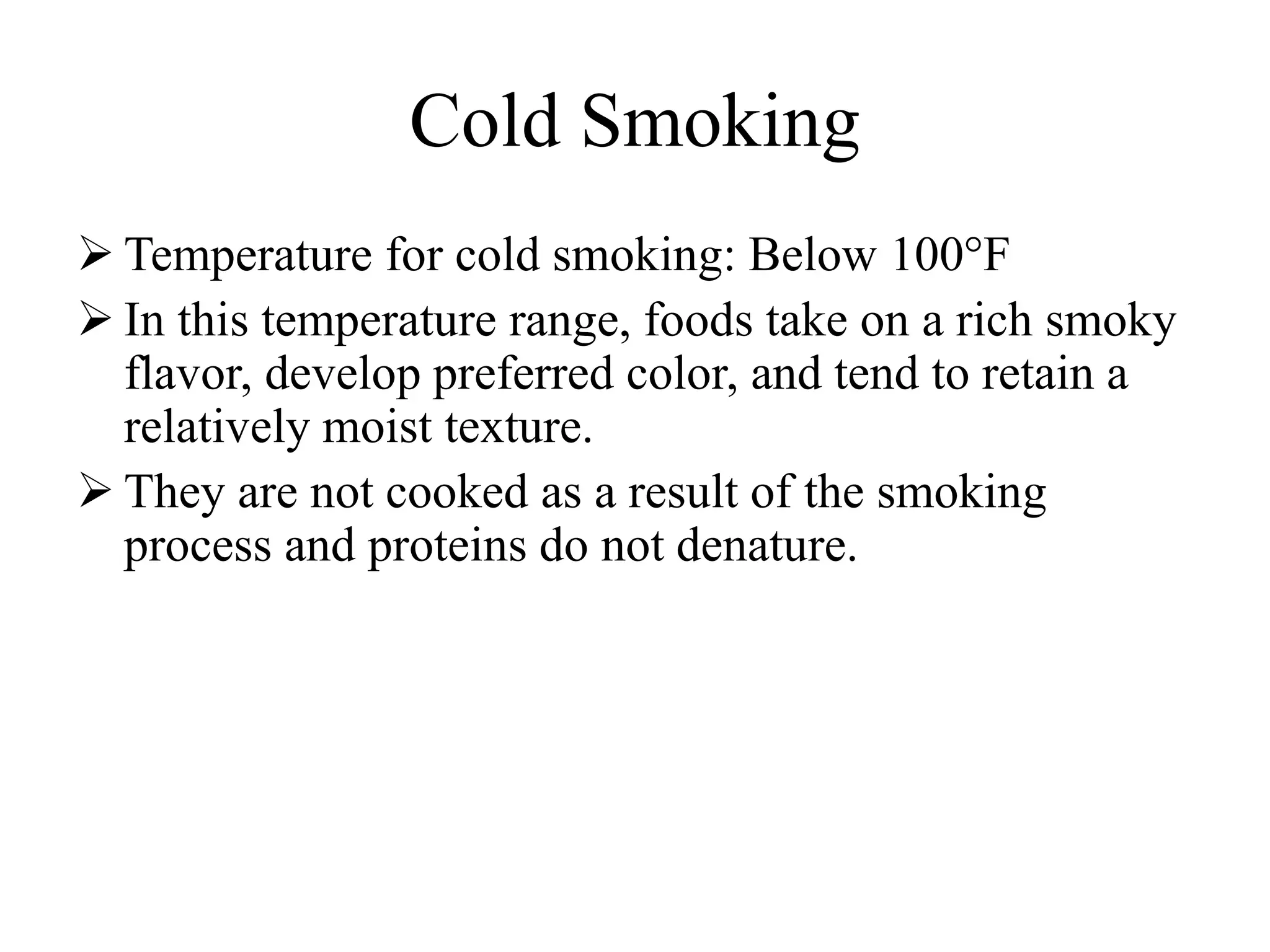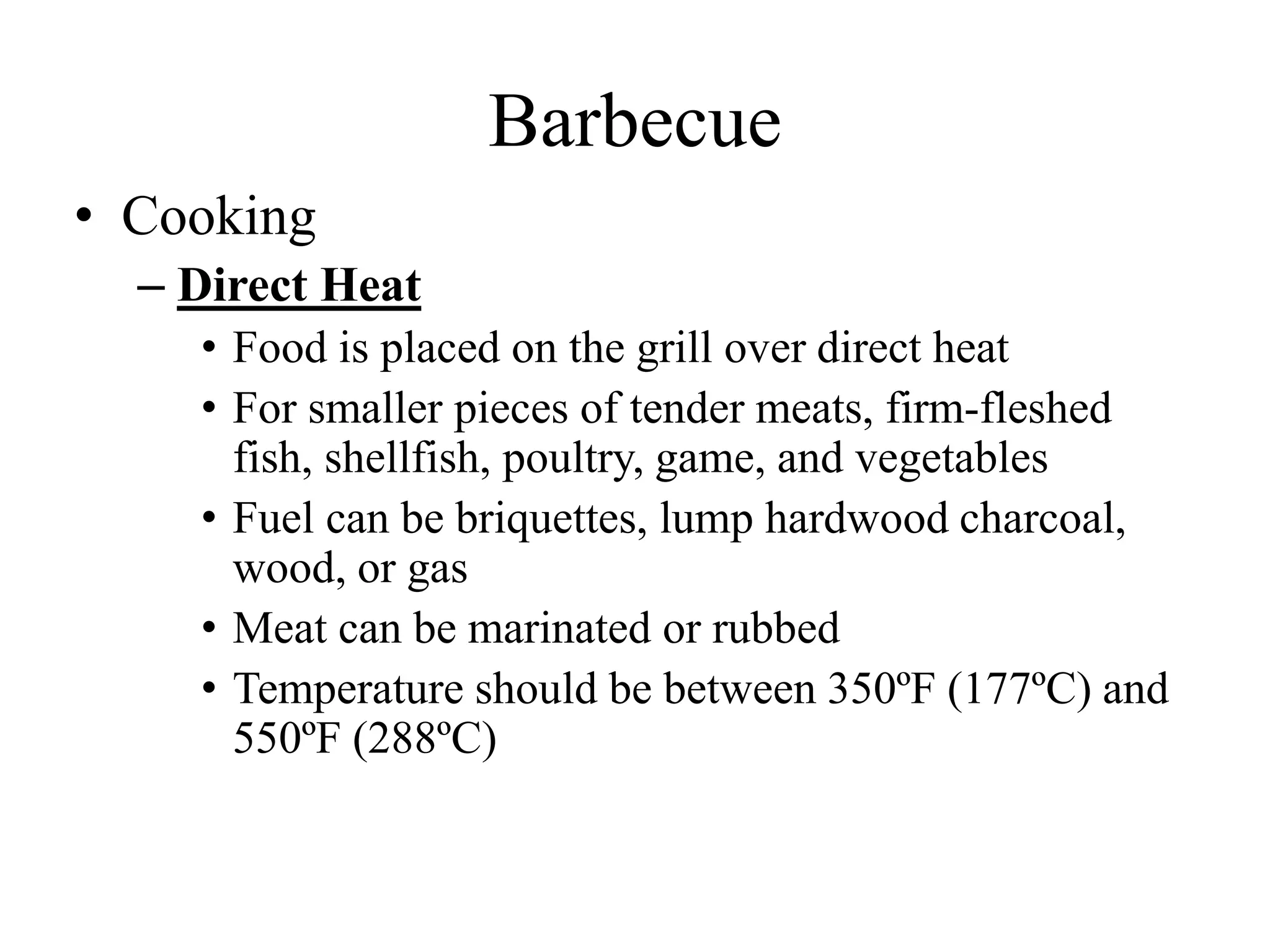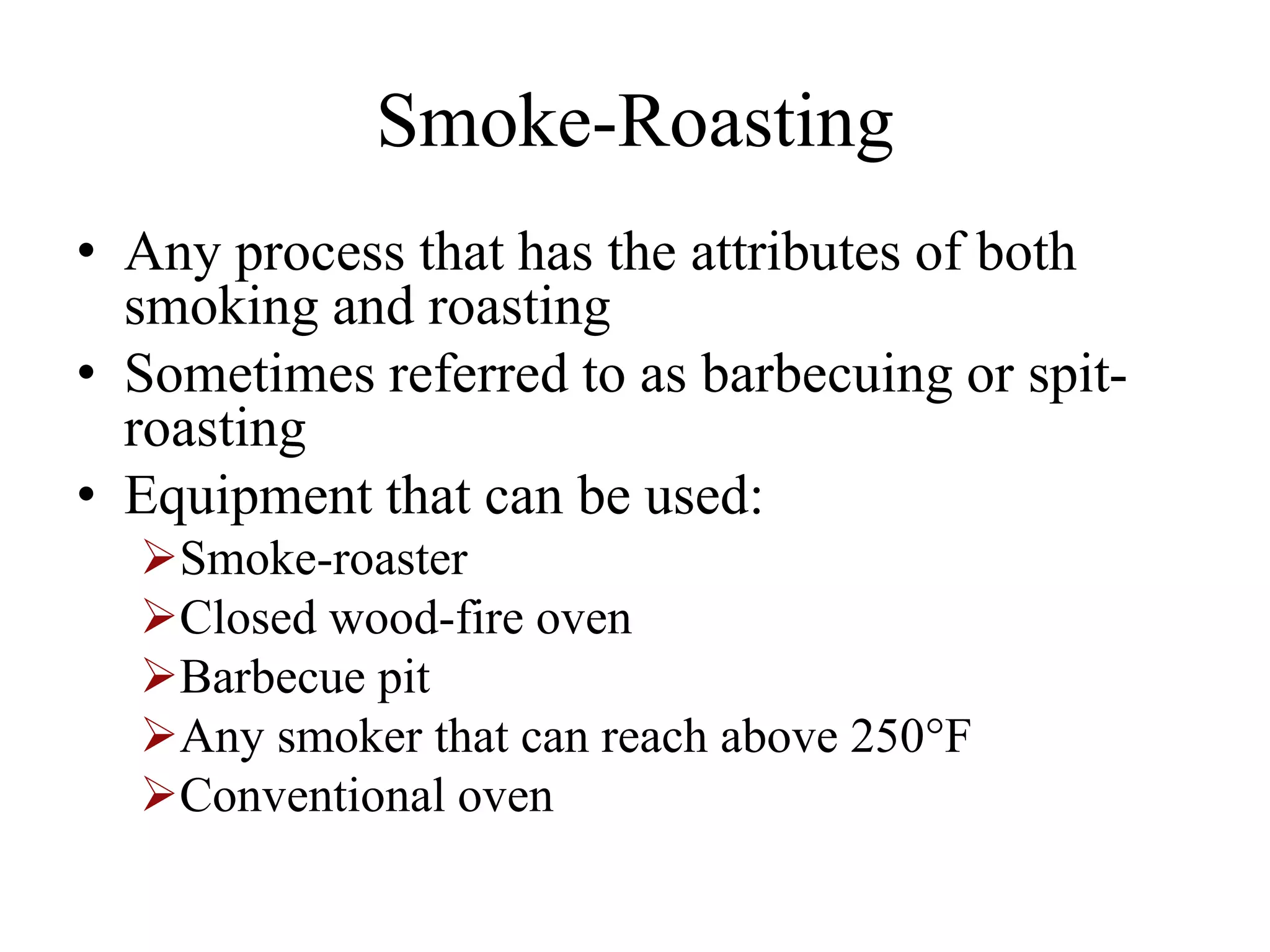Curing and smoking meat involves adding salt, nitrites, and other ingredients to preserve and flavor meat. Curing ingredients like salt, sugar, and nitrites inhibit bacterial growth and develop color and flavor. Meats are cured through dry curing, liquid curing, or injection before being cold or hot smoked using hardwoods to further flavor and preserve the meat. Proper smoking techniques and temperatures are required to safely cook meats while imparting smoke flavors.

